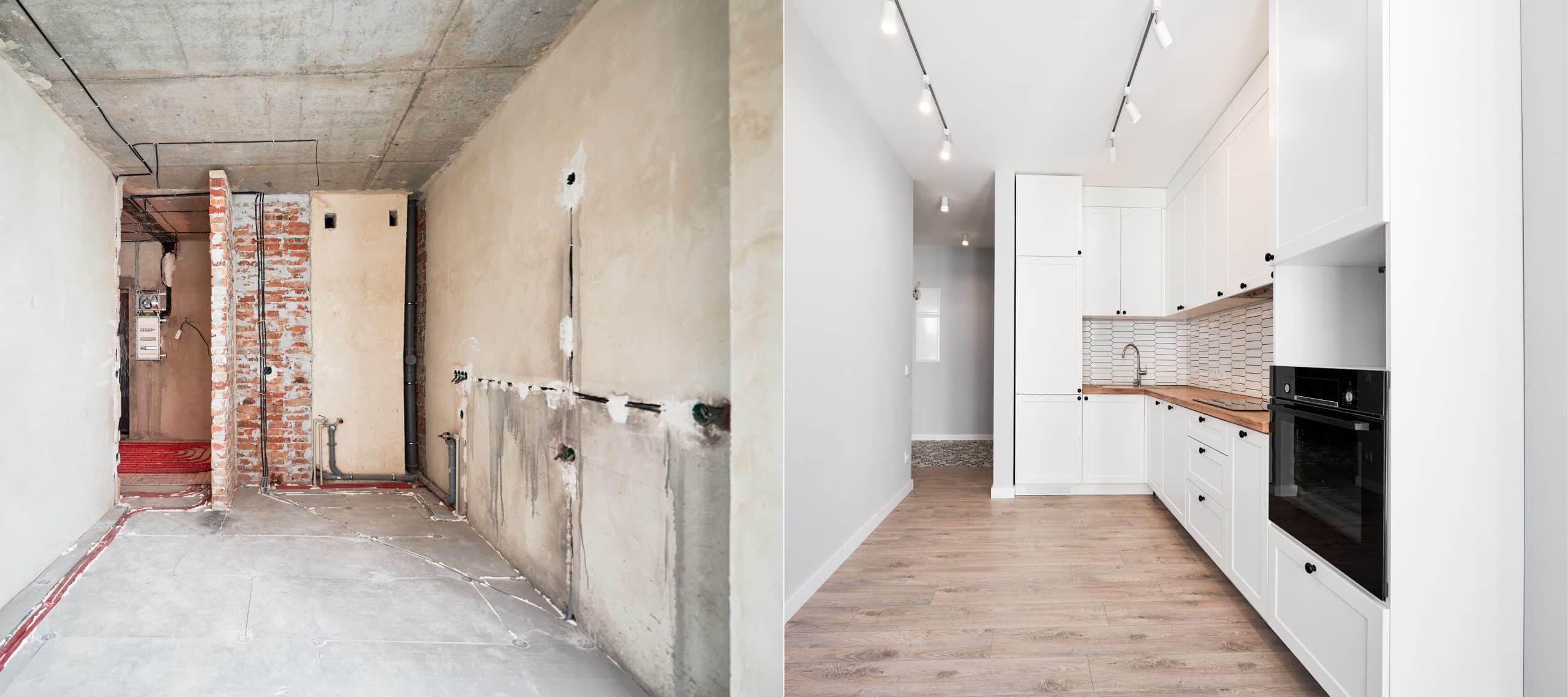What Are the Modern Approaches to Enhancing Energy Efficiency in Historic UK Buildings?

Efforts to conserve energy and reduce carbon emissions are on the rise worldwide. However, the task of improving energy efficiency in historic buildings poses some unique challenges. These buildings are often listed for their heritage value, and any modernisation efforts must occur within stringent conservation guidelines. Therefore, the task requires careful planning and a thoughtful approach that balances respect for the building’s history with the need for modernisation. In England, several measures have been adopted to retrofit these buildings with energy-efficient improvements. This article will explore these modern approaches, offering you advice on how to make your historic homes more energy efficient.
Consideration of Building’s Historic Value
When planning energy-efficiency improvements for historic buildings, it is essential to remember the value of these structures’ heritage. Buildings that are listed for their historical or architectural significance are often subject to strict conservation regulations. These guidelines aim to preserve the building’s historic character, so any retrofit measures should ideally be reversible and minimise physical changes to the fabric of the building.
A voir aussi : How to Manage Heat Island Effect in Dense Urban Areas with Innovative Roofing Solutions?
In England, many organisations offer advice to homeowners and planning authorities on energy-efficient retrofitting of heritage buildings. They will give guidance on various retrofit measures, such as insulation, efficient windows, and energy-efficient lighting, which will not cause significant alterations to the building’s historical fabric.
Retrofit Measures for Improved Insulation
Insulation is a key factor in improving a building’s energy efficiency. It reduces the need for heating and cooling by preventing heat transfer through the building’s structure. However, adding insulation to historic buildings can be challenging due to the potential impact on the building’s appearance and fabric.
En parallèle : What Are the Effects of Advanced Building Codes on Real Estate Investment Returns?
One common approach is to use insulating materials that are sympathetic to the original building materials. For example, breathable insulation products made from natural materials such as sheep’s wool or hemp can be used in buildings with solid masonry walls. These materials allow moisture to pass through, reducing the risk of damp and decay.
Another measure often used in historic buildings is secondary glazing for windows. This involves fitting a second pane of glass behind the original window, creating an insulating air gap. Secondary glazing is reversible and typically less intrusive to the building’s appearance than replacing the original windows with double-glazed units.
Efficiency Improvements in Heating and Lighting Systems
Upgrading the heating and lighting systems can significantly improve a historic building’s energy efficiency. However, these upgrades must be carried out with care to ensure they do not detract from the building’s heritage.
Many historic buildings in England have outdated heating systems that can lead to large amounts of energy wastage. Replacing these systems with modern, high-efficiency boilers can result in substantial energy savings. Additionally, the installation of individual thermostatic controls on radiators allows for better control of heating, leading to further energy savings.
Similarly, replacing old lighting fixtures with energy-efficient LED lights can significantly reduce a building’s energy consumption. LED lighting also offers better light quality, which can enhance the appearance of the building’s interior.
Utilising Renewable Energy Sources
Another modern approach to enhancing energy efficiency in historic buildings involves integrating renewable energy sources. Solar panels, wind turbines, and ground-source heat pumps are some of the renewable energy technologies that can be utilised.
Solar panels are often the first choice for historic buildings as they can be discretely located on roofs or in nearby land without significantly altering the building’s appearance. However, the installation of solar panels should be done following guidance from conservation officers and planning authorities to ensure they do not detract from the building’s heritage value.
Wind turbines and ground-source heat pumps can also be utilised, but their suitability will depend on the specific circumstances of the building and its surroundings. For instance, a wind turbine might be a feasible option for a historic farm building located in a windy area, whereas a ground-source heat pump might be more suitable for a listed manor house with extensive grounds.
Continuous Monitoring and Maintenance
Energy efficiency in historic buildings isn’t a one-time effort but requires continuous monitoring and maintenance. Regular checks and upkeep of the installed measures ensure their long-term effectiveness and safeguard the building’s historic value.
Many organisations in England offer technical assistance and advice for maintaining the energy efficiency measures installed in historic buildings. Regular maintenance not only ensures that the measures continue to function effectively but also serves as an opportunity to identify and address any issues that could impact the building’s heritage value or the comfort of its occupants.
In conclusion, enhancing energy efficiency in historic buildings requires a careful balance between modernisation and conservation. By utilising modern retrofit measures and renewable energy technologies, we can help to preserve these historic buildings for future generations while also making a significant contribution to reducing carbon emissions.
Application of Smart Technologies and Building Management Systems
With the advancements in modern technology, the use of smart technologies and building management systems is another approach often employed in enhancing energy efficiency in historic buildings. These systems provide a platform for monitoring and managing the energy consumption of a building, thereby optimising energy use and reducing wastage.
Smart technologies can include smart meters, energy monitors, and automated control systems. Smart meters provide real-time information on energy usage, allowing homeowners or maintenance staff to identify and address areas of high energy consumption. Energy monitors, on the other hand, track energy usage over time and can help identify patterns of wastage and opportunities for improvement.
Automated control systems can regulate heating, lighting, and ventilation according to occupancy and use, ensuring that energy is used as efficiently as possible. For example, an automated heating system can reduce the temperature in unoccupied rooms and increase it when the rooms are in use.
However, the integration of such technologies in historic buildings should be done carefully, given the preservation requirements of these structures. For instance, any installation should be designed to minimise physical alterations to the fabric of the building. Here, guidance from conservation officers and local planning authorities can be sought to ensure the smart technologies are implemented in a way that respects the building’s heritage.
Utilising Energy Performance Certificates (EPCs)
In the UK, Energy Performance Certificates (EPCs) have been introduced as a key tool in assessing and improving the energy efficiency of buildings. An EPC provides a rating for a building’s energy efficiency and offers recommendations for improvement.
For historic buildings, an EPC can offer valuable insights into areas where energy efficiency can be improved without compromising the building’s historical essence. The recommendations provided can guide professionals and homeowners on the best efficiency measures to implement. It is particularly useful for listed buildings where the scope for alterations can be limited.
Professionals trained in assessing historic buildings provide these certificates. They are well-versed in understanding the unique challenges of these buildings, and their recommendations are made within the context of the building’s heritage and conservation considerations.
Furthermore, having an EPC can increase the appeal of a historic building to potential buyers or tenants, who may be more conscious of energy efficiency and climate change issues. It serves as a testament to the building’s energy efficiency, showing that the building has been well maintained and modernised while also respecting its heritage.
Conclusion
Energy efficiency in historic buildings is a delicate balancing act between preserving the past and embracing the future. The use of modern retrofit measures, renewable energy technologies, smart technologies, and tools like EPCs can greatly enhance energy efficiency in these buildings whilst respecting and preserving their historic charm.
A collaborative approach, involving homeowners, professionals, and authorities, is crucial in this process. By working together, we can ensure that our historic homes are not only monuments of our past but also a testament to our commitment to a sustainable and energy-efficient future.
As we continue to combat climate change and strive towards a more sustainable world, the role of our historic buildings becomes even more significant. By improving their energy efficiency, we not only contribute to a greener environment but also ensure that these beautiful pieces of our history are enjoyed by many more generations to come.
